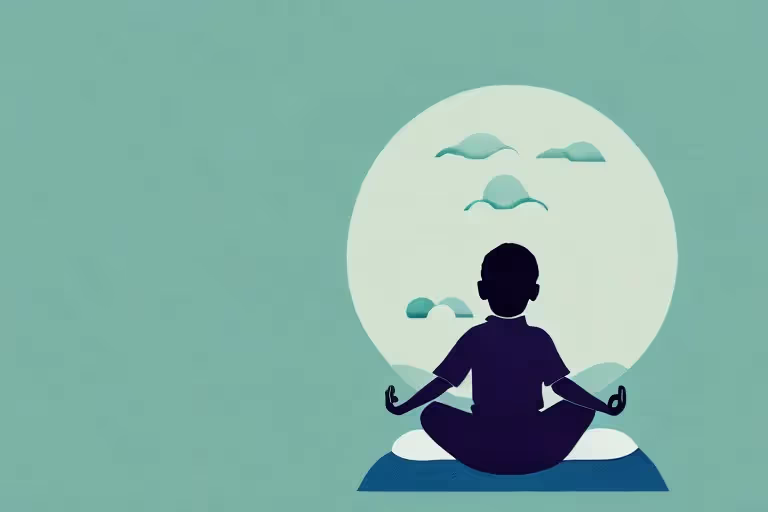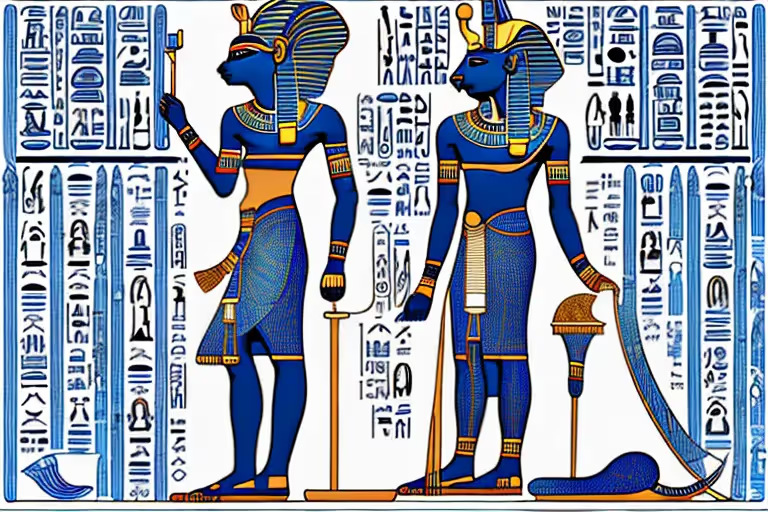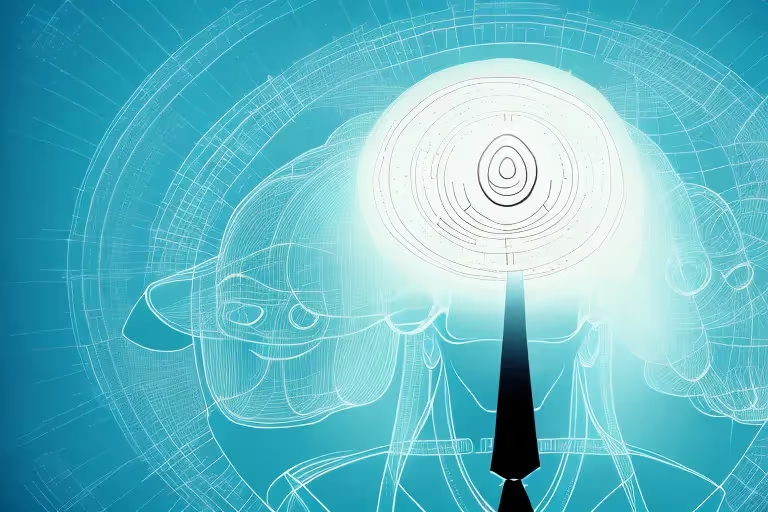Meditation has long been recognized as a powerful practice for personal growth and inner peace. But what if I told you that the benefits of meditation can be magnified when practiced within a community? That's where meditation circles come in. In this article, we will explore the concept of meditation circles, delve into the role of community in this practice, discuss the benefits of collective meditation, and provide insights on how to set up and conduct your own meditation circle.
Understanding the Concept of a Meditation Circle
A meditation circle, also known as a meditation group or sangha, is a gathering of individuals who come together to engage in the practice of meditation. These circles can take various forms, from casual meetups in someone's living room to more structured gatherings in meditation centers or communal spaces. The purpose of a meditation circle is to provide a supportive space for individuals to practice meditation together, share experiences, and deepen their practice.
The Origins of Meditation Circles
Meditation circles have roots in ancient traditions such as Buddhism and Hinduism, where communities would gather to meditate and receive teachings from spiritual leaders. In these circles, individuals would come together to support each other's spiritual growth and cultivate a sense of unity. Today, meditation circles have evolved to include people from various backgrounds and belief systems who are drawn to the practice of meditation.
One can trace the origins of meditation circles back to ancient India, where meditation was an integral part of spiritual practices. In the Buddhist tradition, meditation circles, or "sanghas," were formed as a way for practitioners to come together and support each other on their spiritual journeys. These circles provided a space for individuals to share their experiences, seek guidance from experienced meditators, and learn from the teachings of enlightened masters.
Similarly, in Hinduism, meditation circles played a crucial role in the path of self-realization. These circles, known as "satsangs," were gatherings where seekers would come together to meditate, chant mantras, and listen to spiritual discourses. The collective energy generated in these circles was believed to accelerate the spiritual progress of each individual.
Over time, the concept of meditation circles spread beyond the boundaries of these ancient traditions. Today, meditation circles can be found in various forms and settings, reflecting the diverse needs and preferences of modern practitioners.
The Structure of a Typical Meditation Circle
While the structure of meditation circles can vary, there are some common elements you might expect to find. A typical meditation circle begins with a brief introduction and a period of guided meditation led by a facilitator or one of the participants. This initial meditation session helps create a calm and focused atmosphere, allowing participants to settle into the present moment and cultivate a sense of inner stillness.
Following the meditation session, there is usually a discussion or sharing circle where participants have the opportunity to talk about their experiences, ask questions, and offer support to one another. This sharing circle serves as a platform for individuals to express their thoughts, emotions, and insights that arose during the meditation practice. It fosters a sense of community and connection among the participants, creating a safe space for open dialogue and mutual learning.
Moreover, some meditation circles incorporate additional activities to enhance the overall experience. These activities may include gentle stretching or mindful movement exercises to promote physical relaxation and embodiment. Others may incorporate elements of chanting, singing bowls, or other sound healing practices to deepen the meditative state and create a harmonious atmosphere.
As the meditation circle nears its conclusion, it is common to have a closing meditation or a short reflection. This final practice allows participants to integrate their experiences, express gratitude for the shared practice, and set intentions for carrying the benefits of meditation into their daily lives.
Overall, the structure of a meditation circle is designed to create a supportive and inclusive environment where individuals can explore the depths of their inner being, connect with like-minded individuals, and cultivate a regular meditation practice.
The Role of Community in Meditation Circles
One of the unique aspects of meditation circles is the strong sense of community that is fostered within them. Community plays a vital role in the success and effectiveness of meditation circles.
When individuals come together in a meditation circle, they are not just practicing meditation in isolation. They are part of a larger collective, a community of like-minded individuals who are on a similar path of self-discovery and inner growth. This sense of belonging and connection is what sets meditation circles apart from individual meditation practices.
Building a Supportive Environment
A meditation circle provides a safe and supportive environment where individuals can come together without judgment. In this sacred space, participants can let go of their individual worries and anxieties, knowing that they are surrounded by others who understand and empathize with their struggles.
Within this supportive environment, participants can find solace and comfort in the presence of others. They can share their challenges and triumphs, knowing that they will be met with compassion and understanding. This sense of support creates a strong foundation for personal growth and transformation.
Moreover, the community aspect of meditation circles extends beyond the meditation sessions themselves. Participants often form deep and meaningful connections with one another, forging friendships that extend beyond the confines of the meditation circle. These connections provide a network of support and encouragement, allowing individuals to continue their meditation practice and personal growth even outside of the circle.
Sharing Experiences and Insights
Through sharing their experiences and insights, participants in a meditation circle can learn from one another and gain new perspectives on their own practice. Each person brings their unique journey to the circle, offering a wealth of knowledge and wisdom.
When participants share their experiences, they not only deepen their own understanding of their practice but also inspire and motivate others. Hearing about the challenges and breakthroughs of fellow meditators can ignite a sense of curiosity and exploration in others, encouraging them to push their own boundaries and explore new dimensions of their practice.
Furthermore, the exchange of insights and perspectives in a meditation circle creates a rich and dynamic learning environment. As participants listen to one another, they are exposed to different approaches, techniques, and philosophies. This diversity of perspectives broadens their understanding of meditation and allows them to integrate new ideas into their own practice.
In conclusion, community is an integral part of meditation circles. It provides a supportive environment where individuals can let go of their worries and anxieties, and it fosters a culture of sharing and learning. The sense of belonging and connection that comes from being part of a community enhances the meditation experience and contributes to personal growth and transformation.
The Benefits of Collective Practice
While individual meditation practices can be incredibly transformative, there are unique benefits that arise from practicing meditation in a collective setting.
Enhancing Individual Meditation Practices
When meditating in a group, individuals often find that their own practice deepens and becomes more focused. The collective energy generated within a meditation circle can amplify the individual's experience, making it easier to enter deeper states of meditation and access higher levels of consciousness.
The Power of Collective Energy
Recent data shows that the energy generated when a group of individuals meditates together has a positive impact not only on the individuals themselves but also on the surrounding environment. This collective energy can create a ripple effect, spreading peace, tranquility, and positive vibrations to the wider community.
Setting Up Your Own Meditation Circle
If you are inspired to start your own meditation circle, here are some key considerations to keep in mind.
Finding the Right Participants
When forming a meditation circle, it's important to find individuals who are committed to regular practice and share a similar intention for their spiritual growth. Look for people who are open-minded, supportive, and respectful of others' beliefs and experiences.
Choosing a Suitable Location
Consider the size and atmosphere of the space where you will hold your meditation circle. It should be comfortable, quiet, and free from distractions. This could be your living room, a local community center, or even an outdoor location if weather permits.
Conducting a Successful Meditation Circle
Once your meditation circle is up and running, it's important to establish a set of guidelines or ground rules to ensure a harmonious and productive experience for all participants.
Establishing Ground Rules
On the other hand, establishing ground rules can help create a safe and respectful atmosphere within the meditation circle. Some common ground rules may include arriving on time, maintaining silence during the meditation sessions, and respecting each other's privacy and boundaries.
Guiding the Meditation Process
As the facilitator, it's your role to guide the meditation process and ensure that everyone feels comfortable and supported. You can do this by providing a gentle, calming voice during guided meditations and offering guidance or assistance to those who may be new to the practice.
In conclusion, meditation circles offer a unique opportunity to combine individual practice with the power of community. By joining forces with like-minded individuals, we can deepen our meditation practice, cultivate supportive relationships, and harness the collective energy of the group. So why not give it a try? Start your own meditation circle and explore the transformative potential of community and collective practice.
Aura is Your All In One App for Meditation, Mindfulness Wellbeing
Find peace every day with one app for your whole well-being. There is no one-size-fits-all solution to mental well-being. Aura is the first all-in-one wellness app that learns how to best help you. Discover an endless library of expert-created tracks for your well-being, all taught by the world’s best coaches, therapists, and storytellers. With Aura's personalized recommendations, you can find peace every morning, day and night.



.webp)






.avif)

%20(1).avif)


.avif)
.avif)
.webp)


.avif)


















































































































.avif)

















.svg)









